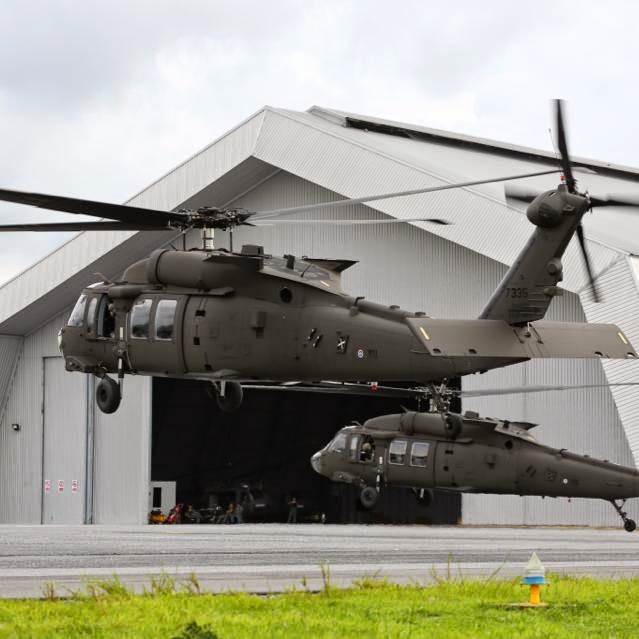Trip Ready: Making Sure Optimum Condition for Your UH 60 Helicopter
Trip Ready: Making Sure Optimum Condition for Your UH 60 Helicopter
Blog Article
Recognizing the Mechanics and Design Behind Uh 60 Helicopters
The UH-60 helicopter, typically understood as the Black Hawk, stands as a peak of modern rotorcraft innovation, embodying a mix of robust design and intricate mechanics. As we peel back the layers of the UH-60's design, a world of intricate systems and careful engineering comes to light.
History of UH-60 Helicopters
The history of UH-60 helicopters traces back to the late 1970s when the United States Army sought a functional and advanced energy helicopter to replace its aging fleet. In feedback to this demand, the Sikorsky Airplane Company developed the UH-60 Black Hawk helicopter. Introduced in 1979, the UH-60 quickly came to be a staple in armed forces operations due to its impressive capabilities.
The UH-60 was designed to succeed in a selection of objectives, including troop transport, clinical emptying, digital warfare, and special operations. Its capacity to adjust to various functions made it an important asset to the united state Army and other army forces worldwide
Over the years, the UH-60 system has gone through numerous upgrades and variations to boost its performance and keep rate with advancing mission needs. These helicopters have seen comprehensive service in disputes such as the Gulf Battle, Afghanistan, and Iraq, showcasing their dependability and flexibility in varied operational environments. The UH-60's rich background is a testimony to its long-lasting legacy as a leading energy helicopter.

Engine and Power Systems
Using sophisticated propulsion modern technology, UH-60 helicopters are furnished with sophisticated engine and power systems to make certain optimum performance and dependability in a range of functional scenarios. The UH-60, generally known as the Black Hawk, is powered by two General Electric T700-GE-701D engines, each with the ability of providing up to 1,940 shaft horse power. These turboshaft engines give the necessary drive for the helicopter to execute its goals properly, including troop transport, medical evacuation, and combat support.

Blades System and The Rules Of Aerodynamics
How do the blades system and aerodynamics of UH-60 helicopters contribute to their functional performance and trip abilities? The blades system of the UH-60 helicopter plays an important duty in offering lift and propulsion.
The rules of aerodynamics also play a key role in the efficiency of UH-60 helicopters. The streamlined fuselage and blades blade layout lower drag, permitting the helicopter to achieve greater speeds and far better gas performance. The aerodynamic style of the UH-60 additionally adds to its capacity to run in varied environmental conditions, including high my link elevations and warm visit homepage temperatures.
Avionics and Trip Control Systems

In its intricate coordination with the blades system and aerodynamics of UH-60 helicopters, the avionics and trip control systems create a crucial network of innovations forming the aircraft's operational abilities. In the UH-60, these systems consist of electronic displays, communication radios, General practitioner navigating, climate radar, and auto-pilot systems.
The trip control systems of the UH-60 are responsible for equating the pilot's inputs into the proper changes to the blades system, making sure steady trip and ability to move. These systems include hydraulic actuators, servos, and computers that function together to control the tail and major blades, along with other trip control surfaces. By specifically managing the helicopter's trip dynamics, these systems make it possible for pilots to execute a large range of objectives, from transport and search-and-rescue to deal with operations, with precision and self-confidence.
Role and Applications in Aviation
The role and applications of avionics and flight control systems in aviation are integral to guaranteeing the effective and safe operation of airplane, consisting of UH-60 helicopters. Avionics systems in UH-60 helicopters incorporate an array of digital systems that help in navigation, communication, monitoring, and regulating various airplane features. These systems include digital display screens, auto-pilot systems, communication radios, GPS navigation tools, and climate radar. Flight control systems play a vital function in navigating the helicopter in the air, maintaining security, and making sure accurate movements. The fly-by-wire innovation utilized in modern UH-60 helicopters converts pilot inputs right into electronic signals, which are after that translated by the flight control computer systems to change click now the airplane's control surfaces. Additionally, these systems incorporate security functions such as autopilot settings, surface understanding cautioning systems, and stability enhancement systems to improve the overall safety and security and functional capacities of the UH-60 helicopters in various goals, including army transport, clinical emptying, search and rescue, and aerial firefighting.
Final Thought
In final thought, the UH-60 helicopter is a flexible aircraft with a rich history and advanced design. Its engine and power systems, blades system, the rules of aerodynamics, avionics, and trip control systems all function with each other to make it a reliable and trusted machine.
In its detailed control with the blades system and the rules of aerodynamics of UH-60 helicopters, the avionics and trip control systems develop a critical network of innovations forming the aircraft's operational capabilities.The trip control systems of the UH-60 are liable for equating the pilot's inputs into the proper adjustments to the blades system, making sure steady flight and ability to move. Avionics systems in UH-60 helicopters incorporate a variety of electronic systems that aid in navigating, communication, monitoring, and regulating numerous airplane functions. In addition, these systems include security features such as autopilot modes, surface understanding cautioning systems, and security augmentation systems to enhance the total security and operational capacities of the UH-60 helicopters in different missions, consisting of troop transportation, medical discharge, search and rescue, and aerial firefighting.
Its engine and power systems, blades system, the rules of aerodynamics, avionics, and flight control systems all function with each other to make it a trusted and effective device.
Report this page